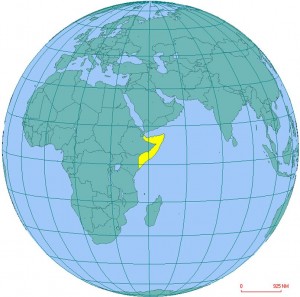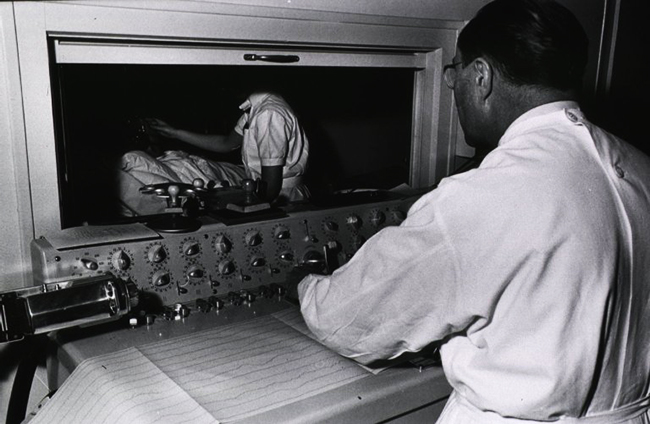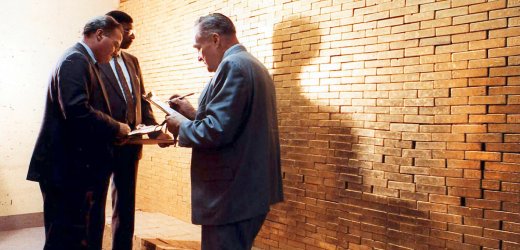Alex Constantine - April 28, 2013
After years of discussion, the U.S. Environmental Protection Agency has published its plan to clean up the highly toxic Gowanus Canal on the banks of Carroll Gardens and Boerum Hill, in tony brownstone Brooklyn. But to the horror of many in nearby Red Hook, the EPA’s proposal includes a plan to turn poisonous sediment from the canal into a concrete substance and dump it into a steel-enclosed container in the New York Harbor, adjacent to Red Hook’s massive complex of low-income housing projects.
The landfill would increase the size of a shipping dock owned by a controversial Red Hook cement manufacturer named John Quadrozzi, who was fined by the state for improperly securing hazardous waste. The fine had remained unpaid as of 2012, but Quadrozzi now tells us he'd settled with the state for $60,000.
Mud dredged from the canal, contaminated with heavy metals, mercury, PCBs, coal tar, bacteria and, yes, Gonorrhea, may very well get barged to Red Hook, where it will undergo de-watering in a not-yet-built treatment plant, on property owned by the same cement manufacturer.
The public has until this Saturday, April 27th, to comment on the plan before the EPA finalizes it. (Details on submitting comment here.)
The $500 million EPA cleanup proposal has pitted scrappy, industrial, low-income Red Hook—still reeling from the devastating floodwaters of Superstorm Sandy—against its wealthier neighbors in Carroll Gardens, where residents are itching to get the canal cleaned.
“The Gowanus Canal runs through Carroll Gardens. Put the stuff there!”shouted Brian Melton, a third-generation resident of Red Hook, who attended a recent EPA meeting to discuss the plan.
Melton’s comments were met with applause by the more than 200 people who had gathered in South Brooklyn Community High School on Conover Street. “Red Hook always takes a beating,” Melton added, shaking his head.
“We do not want toxic wastewater processed in our neighborhood,” said Carly Yates, co-founder of a group called NoToxicRedHook, which formed to fight the Red Hook portion of the EPA’s plan.
The dispute over where the waste should end up has intensified in recent weeks, and centers on the EPA’s proposal to create a “Contained Disposal Facility” or CDF, at the Gowanus Industrial Park, next to the Red Hook Ikea. NoToxicRedHook is organizing residents to oppose the CDF and stop the EPA from commissioning a treatment plant on the waterfront to “de-water” contaminated sludge from the canal.
Christos Tsiamis, the EPA’s Project Manager for the Gowanus Canal, says the plan is “completely safe...or we wouldn’t have proposed it.” But residents of Red Hook, including Andrea Kondaks, are more than skeptical. Kondaks says that Superstorm Sandy left Red Hook traumatized and highly concerned about what happens on the waterfront.
“When the storm hit, we had oily water in our homes,” Kondaks said. “It wasn’t just salty water. We don’t know what was in that water. If there’s even a shred of possibility that they can’t dewater safely in the case of a flood or a hurricane, it’s not worth the risk. We’ve been through a scary experience.”
Meanwhile in Carroll Gardens, a petition-writing campaign has been launched, as residents are concerned that opposition to the cleanup could stall it, or kill it altogether.
Marlene Donnelly is an environmental activist who owns a house on the banks of the canal in Carroll Gardens. She sits on the EPA’s community advisory group for the Gowanus. Donnelly said she believes that the recent and loud opposition to the Red Hook portion of the Superfund cleanup is a smokescreen fueled by powerful entities—developers, as well as the city of New York and National Grid, who all have a vested interest in fighting the cleanup.
The battle is “a total distraction,” said Donnelly, who called those in opposition, “rabble rousers. I think this is an orchestrated campaign to discredit the Superfund.”
The contamination in the Gowanus Canal is the product of 150 years of heavy industry, industrial dumping, and sewage drainage into the canal. The EPA has named 37 polluters who will have to foot the bill. But it is the city of New York, and National Grid, who will pay for the the largest portion of the $500 million project.
For decades the land around the canal was relatively barren and mostly industrial, but as Carroll Gardens and Park Slope have spread out and seen their property values increase, the land around the canal has become fertile ground for development.
The EPA listed the Gowanus as a Superfund in 2010, against strident objection from Mayor Bloomberg, who was quoted as saying a Gowanus Superfund cleanup “would be a nightmare.” At the time, Bloomberg said that developers should pay for a cleanup overseen by the city.
The federal Superfund program, in contrast, requires polluters to pay for the cleanup. In the meantime, a Whole Foods is currently under construction on the canal’s bank, and a controversial condo project has been proposed.
In addition to what the city must pay as part of the cleanup, the EPA is requiring that the city greatly reduce constant sewer overflows into the canal during rainstorms. The EPA is also advocating that the city install $80 million worth in retaining drums to catch the overflows.
In light of the massive cost of the project, saving money where possible is clearly an issue.
According to the EPA, storing the least-toxic sediment on Red Hook’s waterfront with the CDF would save $37 million in shipping costs, and would also reduce the project’s carbon footprint, as the treated material would not have to be barged or trucked to a disposal facility outside the city.
It’s “obvious” that the CDF plan was conceived to save the city and National Grid money, Tsiamis, the EPA engineer, told Gothamist. But the plan also was thought of as a potential benefit to Red Hook, in that it would create new land that could be used for various purposes, he said.
At the recent Red Hook meeting, Walter Mugdan, who oversees the EPA’s Superfund program in New York and New Jersey, told the crowd that the EPA is listening to what they have to say. Placing the treated sediment in Red Hook is just one option, Mugdan said. “It is the most heavily contaminated water that I am aware of,” Mugdan told the crowd of the Gowanus. “It is clearly in the public interest to clean it up.”
The property on which the EPA is proposing to house the remediation center, near the popular soccer fields and IKEA store, is owned by Quadrozzi, who has found himself in the news on several occasions for environmental violations. Inspectors claimed he allowed potentially hazardous waste to wash into the New York Harbor and had constructed an illegal fence that blocked views. The city’s Landmarks Preservation Commission also sued Quadrozzi in 2010 over a landmarked building at Henry and Congress in Cobble Hill that the city claimed Quadrozzi neglected and let fall into dangerous disrepair.
Phaedra Thomas, a spokesperson for Quadrozzi, insists "the only thing that entered the water [in New York Harbor] was ordinary sand." She says Quadrozzi is an "environmental advocate. He is the farthest thing from an environmental criminal. He uses biodiesel for his trucking industry operations. He cares very much for the environment and it's outrageous that he'd be labeled otherwise... He doesn't even kill flies."
Thomas says this facility would be a great benefit for the neighborhood, arguing, "environmentally it's the right thing to do. Economically it's the right thing to do. And it's safe. So why are we fighting this? And yes, this community needs jobs. Jobs have become a dirty word, and I find it offensive." She points out the Red Hook Houses have 23% or higher unemployment according to the most recent census.
At several meetings with Red Hook residents, Quadrozzi has said that if he gets approval for the CDF disposal facility, he will work with the EPA to ensure that 40 to 60 “high quality jobs” are created with an eye toward hiring Red Hook men with criminal records who are trying to get back on their feet. He has also said that he could build a park near the disposal site. But residents of the Red Hook Houses scoff at these assurances.
“I have a one-year-old grandson. I would like to see him grow up. I’ve lived here for 50 years, and I’m plenty angry,” said resident Elsie Felder. “Throwing money at us, it does not make this right.”
Felder, who is 80 years old and has three daughters and grandchildren who live in Red Hook, says she feels like there is a racial element to this proposal. “I don’t think they’d consider putting this stuff in other areas of Brooklyn, let’s put it that way,” Felder says. “To me, they’ll put it in the area where there is the least opposition to it. "I do feel there is a race aspect to it. When they held meetings on this in other areas, in Park Slope and wherever, the people were for it. Well, I guess so, because it’s not going in their community. It’s going in somebody else’s community.”
Felder worked for the city Department of Employment for 12 years. She said she’s offended by the offer of jobs if the CDF comes to Red Hook.
“I don’t care if it’s 500 jobs, I would still be against this, because of the uncertainty about the materials coming from the Gowanus Canal. If you look at it, have you looked at it? You can imagine all the ingredients in the water there. Red Hook has an asthma problem. This won’t be good.”
The diverse group of artists, residents and environmental-activists, calling itself NoToxicRedHook, met at the Bait & Tackle bar recently to strategize on how to fight the waste disposal plan.
Mark Chin is running offense for the group—he only recently got his heat turned back on after Hurricane Sandy flooded his house. After wrestling nature, electricity and insurance companies for the past five months, Chin focused his fighting energy on what he sees as an environmental hazard on his doorstep.
“Red Hook is the low-rent neighborhood in the area,” said Chin, a real estate agent. “We used to have the highest concentration of legal and illegal trash transfer stations in the city. If you were in Red Hook, all you could smell was garbage.”
Chin adds, “It’s the poor neighborhood that’s getting dumped on. And who lives here? A whole lot of African-Americans and Latinos. I don’t think this is overtly racial, but there is an environmental justice issue here.”
Carly Yates, who co-founded the group with Chin, says the matter is bigger than NIMBYism. “This is a big issue for everyone, Park Slope, Carroll Gardens, anyone close to the canal. I think cleaning of the canal is the right thing to do. My concern is whether or not we can trust the EPA to do it.”
Dr. Tom Agnotti is a professor of Urban Affairs and Planning at Hunter College and CUNY Graduate School. He said back in the 1990s, the city proposed two sludge treatment facilities for Red Hook. The neighborhood united and fought that proposal, and won.
“Environmental justice has been an issue in Red Hook for quite some time. This is one of many noxious facilities that continue to get concentrated in the same neighborhoods that already have a lot of environmental health and safety hazards.
“It is going to go somewhere. But why does it go to the same neighborhoods? The south Bronx, portions of north Brooklyn, and the south Brooklyn waterfront have the highest proportion of waste facilities in the city,” Agnotti says.
“But where are the biggest NIMBY cries? The east side of Manhattan, where the city has proposed a waste transfer station. Manhattan has no waste transfer station, it all gets sent out to the Bronx and Brooklyn. This was an attempt to make sure that Manhattan takes care of its part, and it’s in court. NIMBYism isn’t unique to Red Hook.”
Agnotti concedes that the decision on where to dump waste also must be practical. “It’s often a pragmatic decision. What’s the easiest and closest place. What’s the most economical.”
The dredging of the canal is set to begin in 2016. When asked about the accompanying odors and safety hazards, Tsiamis, the EPA engineer, said, “Walk down the canal. There are unpleasant smells. What we are trying to do is remediate the canal so that, in the long run, you don’t have these smells.”
Tsiamis added that as the dredging takes place, “you will have inconveniences.” But, he says, the EPA will continuously monitor the air where the work is taking place, “first and foremost, to make sure the workers are safe. If the workers are safe, everyone around there is safe also.”
At the EPA meeting in Red Hook, some residents questioned what would happen to a water treatment plant in Red Hook if there is another flood. “We’ll just turn the power off,” Walter Mugdan, the head of the EPA’s Superfund sites in New York and New Jersey told the crowd.
Mugdan also made note of the strenuous opposition to the Red Hook plant: “I will predict for you that, based on the response we have received, it will not be the (proposal) accepted,” he said, adding later that he “almost wished” that the Red Hook CDF had never been part of the plan in the first place.
During Hurricane Sandy, several sewage treatment plants flooded, lost power and released raw sewage. In Newark, the fifth-largest sewage treatment facility in the nation released a half-billion gallons of sewage into the N.Y. Harbor. Scientists are still studying the impact of the leakage, but repairs to the plant will cost at least $250 million. Tsiamis said the EPA is taking the potential for more hurricanes into account, and safety precautions will be put into place.
Tsiamis says there is “a lot of misunderstanding” about the proposal. “Whatever we do, we do with safety in mind, safety of the workers and safety of the public,” Tsiamis says.
With all this controversy, is there a chance the EPA will cancel or delay the Superfund for the Gowanus? “Absolutely not, absolutely not,” Tsiamis said. “We are on track with our plans. We are not going away anytime soon, until we finish the cleanup.”
Lisa M. Collins is a writer living in Brooklyn. She edits SouthBrooklynPost.com and follows all things Brooklyn.







